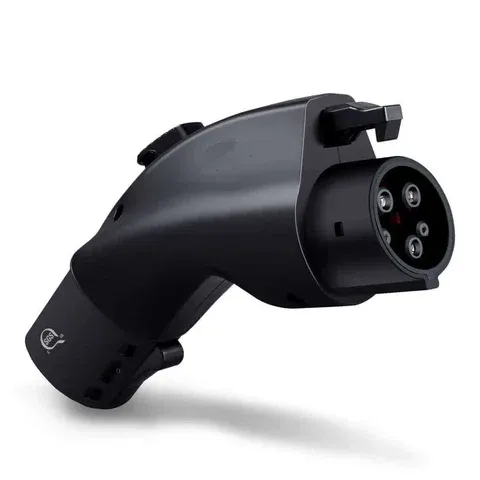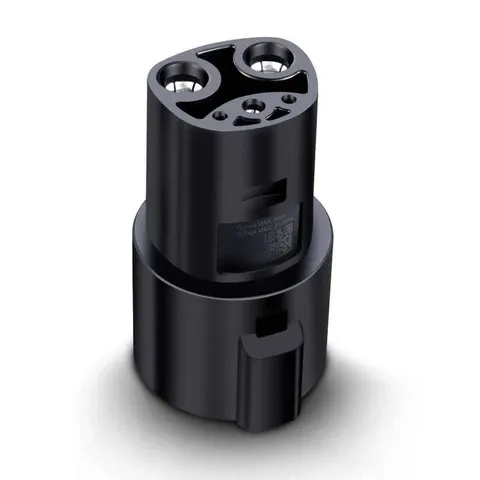As electric vehicles (EVs) continue to dominate the automotive landscape, the demand for flexible, reliable, and efficient charging solutions is growing faster than ever. A crucial component supporting this shift is the EV charging adapter — a small but powerful tool that bridges the gap between different charging standards and connector types. For EV owners, understanding and using these adapters effectively can mean the difference between a seamless charging experience and a frustrating one.
Charging adapters are designed to make EVs compatible with a broader range of chargers, ensuring that drivers can power up their vehicles regardless of the plug or charging standard available. From home garages to public charging stations and cross-country road trips, adapters extend convenience and accessibility to every corner of an EV driver’s journey.
This article explores the most common types of EV charging adapters, their benefits, safety considerations, and practical tips for EV drivers — while also looking at how these accessories are shaping the future of electric mobility.

Before diving into adapters themselves, it’s important to understand why they exist. Unlike traditional gasoline fueling, which uses the same nozzle everywhere, EV charging systems differ by region, manufacturer, and charging level.
Globally, the most common connector types include:
J1772 (Type 1) – Standard for North American AC charging stations, used by most non-Tesla EVs.
Type 2 (Mennekes) – The European AC standard, common across the EU.
CCS (Combined Charging System) – A fast-charging standard that builds on J1772 or Type 2, adding two high-power DC pins for rapid energy transfer.
CHAdeMO – A Japanese-origin standard used for DC fast charging, found on older Nissan Leafs and Mitsubishi EVs.
Tesla proprietary connectors – Used on Tesla chargers in the U.S., though the company is gradually adopting the NACS (North American Charging Standard), opening its network to other EV brands.
Because these systems aren’t universally compatible, charging adapters play a vital role in ensuring drivers can connect their vehicles to any available charger, regardless of its native plug type.
EV adapters vary depending on the vehicle brand, charging standard, and type of current (AC or DC). Below are the most commonly used adapters in the EV market today:
Function: Allows non-Tesla EVs to use Tesla’s Level 2 destination chargers.
Use Case: Particularly useful for EV owners who want access to the large Tesla charging network available at hotels, parking lots, and workplaces.
Limitation: This adapter does not support Tesla Superchargers, as those use a different high-power DC connection protocol.

Function: Enables Tesla vehicles to charge at most public Level 2 J1772 stations.
Availability: Usually included with Tesla vehicles at purchase.
Benefit: Expands Tesla drivers’ access to thousands of third-party AC charging points across North America.
Function: Allows CCS-equipped non-Tesla EVs to charge at Tesla Superchargers that support CCS connections.
Importance: As Tesla transitions to the NACS standard, these adapters are becoming key to cross-network compatibility, especially in mixed charging regions.
Note: Some Tesla vehicles may require a CCS retrofit or software update to use this adapter.

Function: Enables Teslas to charge on older CHAdeMO DC fast chargers.
Use Case: While CHAdeMO stations are becoming less common, this adapter remains valuable in areas with legacy charging networks.
Limitation: Typically slower than modern CCS fast charging options.
Function: Converts between European (Type 2) and North American (Type 1) AC standards.
Use Case: Ideal for EV owners who travel internationally or import vehicles from other markets.
Each adapter offers unique compatibility advantages, helping EV drivers make the most of their charging opportunities — whether at home, on the road, or abroad.
Adapters let drivers charge at more stations, regardless of plug type or brand. For example, with the right combination of adapters, a European Type 2 EV can access North American J1772 chargers and vice versa.
Carrying an adapter virtually eliminates range anxiety by opening up access to multiple charging networks. Drivers no longer need to rely on one brand or one type of charger — especially important on long road trips or in rural areas.
Different charging networks offer varied pricing. By using an adapter, EV owners can take advantage of cheaper charging options rather than being tied to a single provider.
The EV industry continues to evolve rapidly, with connector standards and infrastructure still consolidating. Having the right adapters ensures long-term compatibility, even as technology transitions — such as the ongoing shift from CCS and CHAdeMO to the Tesla-designed NACS standard.
Adapters make it easier to drive your EV across borders or regions. For example, European travelers can carry Type 2 to Type 1 adapters when bringing their EVs to North America, ensuring charging accessibility abroad.
Not all adapters are created equal. Selecting the proper model involves understanding your EV’s specifications and the charging networks available in your region.
Always verify whether your vehicle supports the adapter you plan to purchase. Some Tesla models, for example, need a CCS retrofit to use certain DC fast chargers.
Ensure that the adapter supports the charging speed (kW) your vehicle requires. Using an under-rated adapter can limit charging performance or cause overheating.
Certified products from reputable brands like Lectron, A2Z EV, Tesla, or Juice Technology are tested for safety and durability.
UL-listed, CE, or TÜV-certified adapters comply with international safety standards, minimizing the risk of fire or electrical failure.
Flexible, heat-resistant cables and reinforced connectors improve both user experience and longevity.
Using adapters responsibly ensures both personal safety and optimal performance for your EV. Below are some expert recommendations:
Different routes may offer various charger types. Keeping the right adapter in your vehicle ensures charging flexibility anywhere you go. For Tesla owners, that typically means carrying a J1772 to Tesla adapter for public AC stations, and for non-Tesla EV owners, a Tesla to J1772 adapter can open up additional charging options.
Keep your adapters in a dry, padded compartment such as your glove box or trunk organizer. Avoid exposure to moisture, dust, or extreme heat. Consider purchasing a protective carrying case for additional safety and organization.
Before each use, check for frayed cables, bent pins, cracks, or discoloration. Even small damages can compromise electrical integrity, posing shock or fire risks.
Never use an adapter that shows signs of wear or damage. Faulty adapters may cause overheating, reduced charging speed, or even damage your EV’s charging port and onboard systems.
Manufacturer-approved adapters ensure the highest level of safety and performance. Avoid cheap, uncertified knock-offs that may not meet proper electrical or thermal standards.
Not all EVs support all types of adapters. For example, Tesla Superchargers in North America currently work only with certain non-Tesla EVs. Always confirm compatibility through the vehicle manual or manufacturer’s website before attempting to charge.
When using an adapter, stay near your vehicle during the first few minutes of charging. Observe the charging rate and ensure there are no overheating issues or error messages on your EV display.
The future of EV charging is trending toward greater standardization, which could eventually reduce the need for multiple adapters. A major milestone in this shift is the adoption of the North American Charging Standard (NACS) — Tesla’s formerly proprietary plug — by several leading automakers, including Ford, GM, Rivian, Mercedes-Benz, and Volvo.
By 2025, most new EVs sold in North America are expected to feature NACS ports, allowing direct access to Tesla’s extensive Supercharger network without an adapter. However, until that transition is complete, adapters will remain an essential bridge for millions of existing EVs using CCS or J1772 connectors.
In Europe and Asia, Type 2 and CCS remain dominant, with CHAdeMO gradually being phased out. As global standards converge, the role of adapters may shift from necessity to convenience — useful primarily for travelers and legacy vehicle owners.
Imagine arriving at a hotel that only offers Tesla destination chargers. With the right adapter, non-Tesla EV owners can still charge overnight instead of searching for an alternative station miles away.
Adapters reduce dependence on specific networks, helping drivers plan flexible routes. This is particularly beneficial in areas with limited infrastructure.
Companies operating mixed-brand EV fleets benefit from adapters, ensuring every vehicle can use shared charging infrastructure efficiently.
In case of charger unavailability or malfunction, having an adapter provides a crucial backup option — helping avoid delays during long trips.
Consider a driver traveling from California to Washington in a CCS-equipped EV. Along the route, Tesla Superchargers may be the most frequent high-speed charging option. With a Tesla-to-CCS adapter, the driver can access these stations seamlessly, significantly reducing travel time.
Alternatively, a Tesla owner traveling through rural regions where public J1772 Level 2 chargers dominate can stay fully charged using a J1772-to-Tesla adapter, ensuring the journey continues without interruption.
Such flexibility makes adapters an indispensable companion for EV drivers seeking freedom and confidence on the road.
While the long-term goal of the EV industry is universal compatibility, adapters will continue to play an important transitional role. As automakers and charging providers collaborate toward interoperability, new-generation adapters are emerging with smarter features, such as:
Built-in chip recognition for auto-adjusting current levels.
Temperature monitoring to prevent overheating.
Integrated locking mechanisms for theft prevention.
Weatherproof casings for outdoor use.
In addition, portable adapter kits are being designed for international travelers, supporting both voltage conversion and connector compatibility in a single compact device.
Electric vehicle charging adapters are far more than accessories — they are enablers of mobility, convenience, and sustainability. As the EV ecosystem continues to expand globally, these adapters serve as vital tools connecting different technologies, standards, and regions.
Whether you’re a Tesla owner exploring third-party networks, a non-Tesla driver accessing Tesla chargers, or simply an EV enthusiast planning road trips across borders, carrying the right adapter ensures you’re always ready to charge wherever you go.
Until charging standards fully unify under systems like NACS or CCS, EV charging adapters remain the key to universal charging freedom — empowering drivers to travel confidently in the clean, electric future of transportation.
